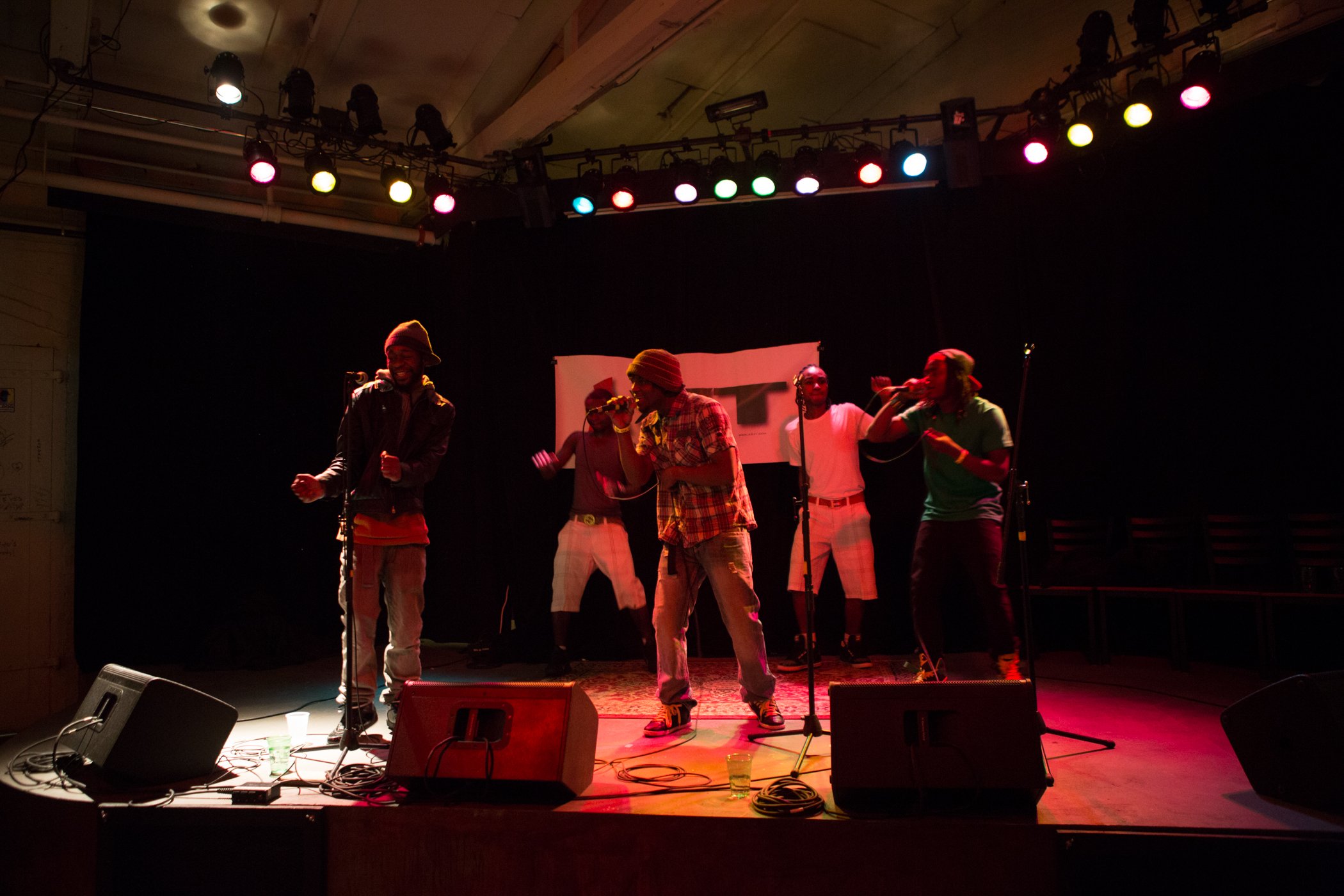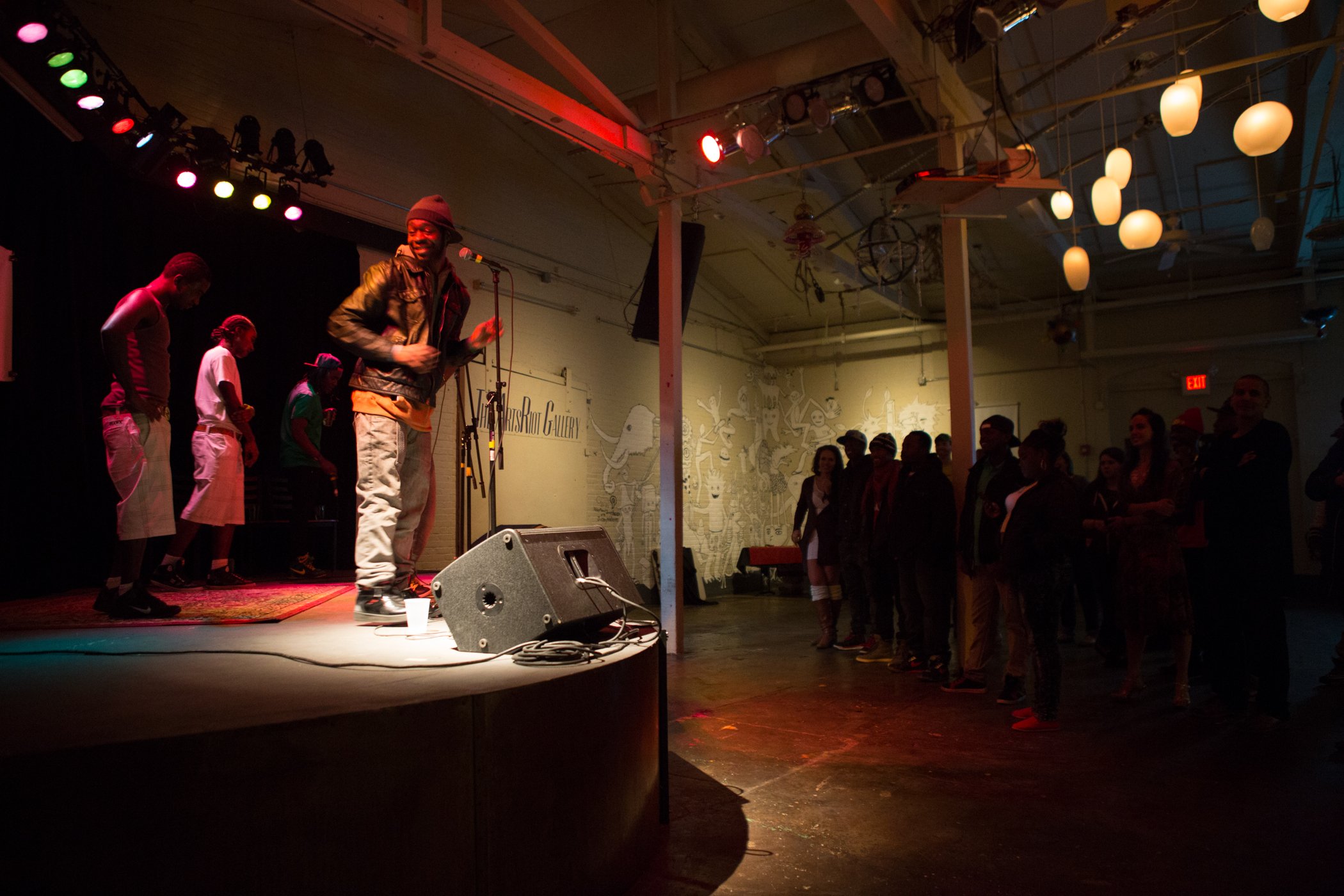A2VT and Migmar In the News
A2VT and Migmar Tsering, two Vermont Folklife Center collaborators, were recently featured in a Burlington FreePress profile on emerging New American Artists.
A2VT (Africa to Vermont), a Winooski-based hip-hop group formed by three young refugees from Somalia, Congo and Tanzania that takes the global language of hip-hop and infuses it with the personal, musical, and cultural traditions of each performer. Their songs are a mix of languages—English, French, Mai Mai, and Swahili—and through them they draw together past and present to forge new identities rooted in worlds both old and new. We met A2VT during the production of their first album, which we supported through our New Neighbors Music Project. Click to learn more about our New Neighbors Music Project.
Migmar Tsering is a tibetan musician that moved to Vermont in 2011—and shortly after began teaching Tibetan music to young people in his community here with support from the Vermont Folklife Center’s Traditional Arts Apprenticeship Program. Click to learn more about our Traditional Arts Apprenticeship Program.
Read Alexandre Silberman's complete article in the Burlington FreePress, here. Or, see excerpts below.
A2VT
A2VT performs live at ArtsRiot in Burlington, VT in November 2014.
“The group is comprised of Beny Kisse, whose stage name is Benny Gola, Said “Jilib” Bulle and George “MG Man” Mnyong. All three came to Vermont from countries experiencing war or political conflict. Kisse is from the Republic of the Congo, Bulle, 27, is from Somalia and Mnyong, 26, hails from Tanzania.
“For me it’s a kind of journal,” Kisse said of composing music with the group.
A2VT’s music is influenced by many different styles. The group’s manager, David Cooper, described it as “international music where hip-hop, dance and afro-pop come together.”
The trio sings and raps their upbeat tracks in numerous languages including English, Maay Maay, French, Swahili, Somali, Kirundi, Lari and Lingala.
The members of the group learn words in each other’s languages to sing different sections of songs, including Cooper, who sings background parts.
“It’s like a class. You have to understand the meaning, you have to understand how to pronounce it, and you need to be able to explain it to people if they ask you,” Kisse said of learning foreign language lyrics.
They started back in 2008 when Cooper first met Bulle and Mnyong. He invited them to work on original music with him and the group took off from there.
Mnyong created the group’s name. It is short for “Africa to Vermont.”
“The first time I heard an A2VT song I was really impressed,” said Kisse, who joined later as a singer.
Like his fellow musicians, Kisse started dancing and singing at a young age. He would compete in dance competitions back home along with his brother. Mnyong was singing, dancing and writing songs at age 12. They have now been presented with more opportunities to pursue their passions since coming to the United States.
“In my country I didn’t know what to do with my songs, because it was so expensive to go to the studio,” Mnyong said.
Cooper and the group all agree that their music has helped bring the community closer together.
“People love them in Vermont and love them in Burlington,” Cooper said. “When they go perform at schools around the state the kids go crazy.”
A2VT’s latest single, “Let’s Get Together,” calls for unity and togetherness.
“There’s a message for everybody in our music, especially young people,” Bulle said. “Music is a form of human connection.”
”
Migmar Tsering
Migmar Tsering posing with his Dramyin - a traditional Tibetian instrument he has been playing since he was a child. Migmar has lived in Vermont since 2011 and is the President of the Tibetan Association of Vermont.
“Migmar Tsering’s love of music helped him find a home in Vermont
“When I came here, the little knowledge I had of music kept me going and kept me motivated,” Tsering said, who came to Vermont from Tibet in 2011 to reunite with family.
He was then introduced to many members of the Burlington music community and developed countless connections.
“When you know people, you feel at home here,” Tsering said. “You feel accepted, you feel like you have a place.”
Tsering is one of many new Americans who are finding a place in the Burlington community through music. Others include the African hip-hop band A2VT and Syrian musician Anwar Diab Agha.
Tsering plays the traditional traditional Tibetan guitar, known as the dranyen, which has three sets of two strings. He performs the dance styles of toeshey and nangma.
You could find a dranyen in every household in Tibet, Tesring said. Music is a big part of Tibetan life.
Since childhood, Tsering has always been associated with music and dance. Every night in his village, he would partake in a community folk dance, which he was very good at.
After obtaining his bachelor’s and master’s degrees, Tsering settled down as a middle school science teacher, married, had two daughters. Soon after he left Tibet to rejoin family in Vermont. He brought his music with him.
“I never thought anybody would listen to my music or my songs. Nobody understands Tibetan, and I play such a simple instrument. Over here you have everything you can imagine,” Tsering said.
The Burlington music community defied his expectations. He is a board member Young Tradition Vermont, a local traditional music and dance youth organization, and has worked with the Vermont Folklife Center to find opportunities to play.
Tsering can now be found singing and plucking his dranyen at First Night Burlington and different festivals around the state. He has also started to compose his own music.
“Over here I started to get a lot of chances to perform,” he said. “It’s like finding myself again, in a different country.”
Tsering is proud of how music has allowed him to preserve his culture and identity. He hopes one day to teach others in the community how to play dranyen.”



